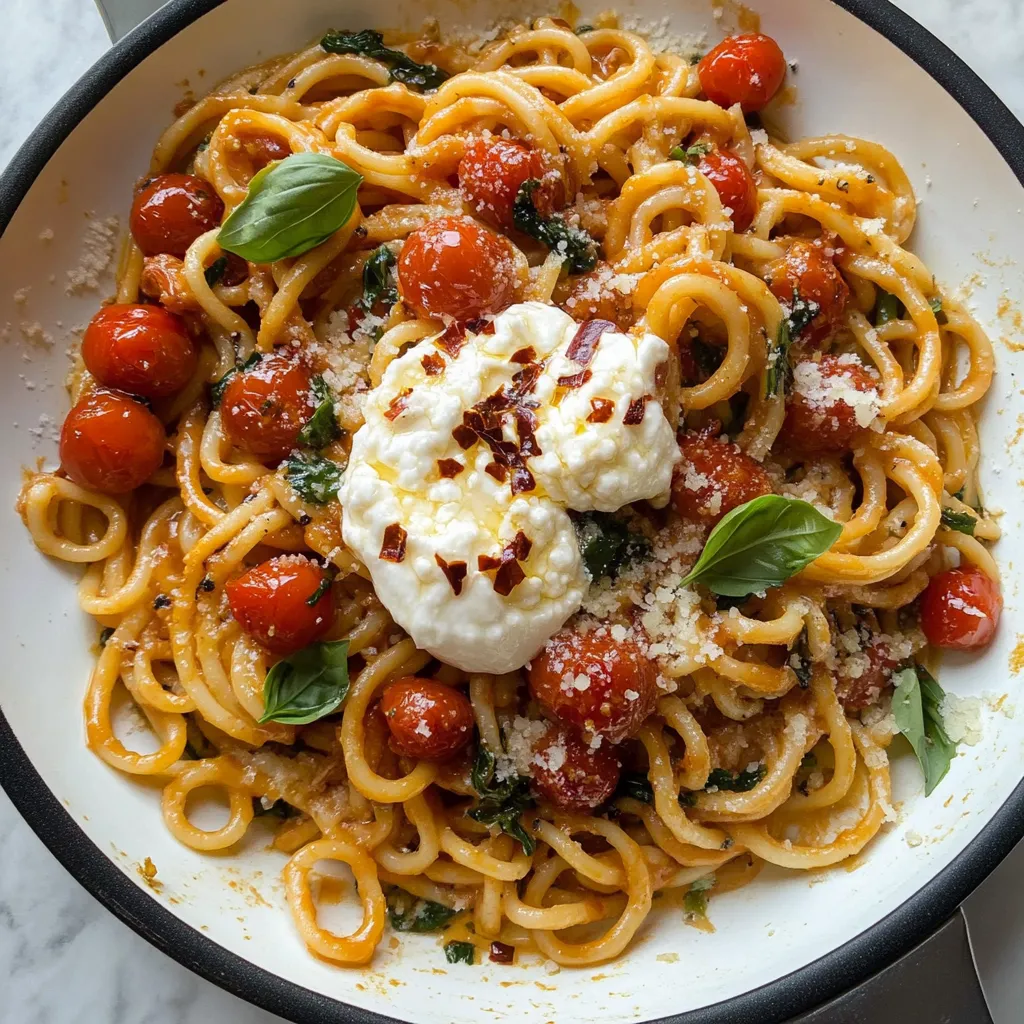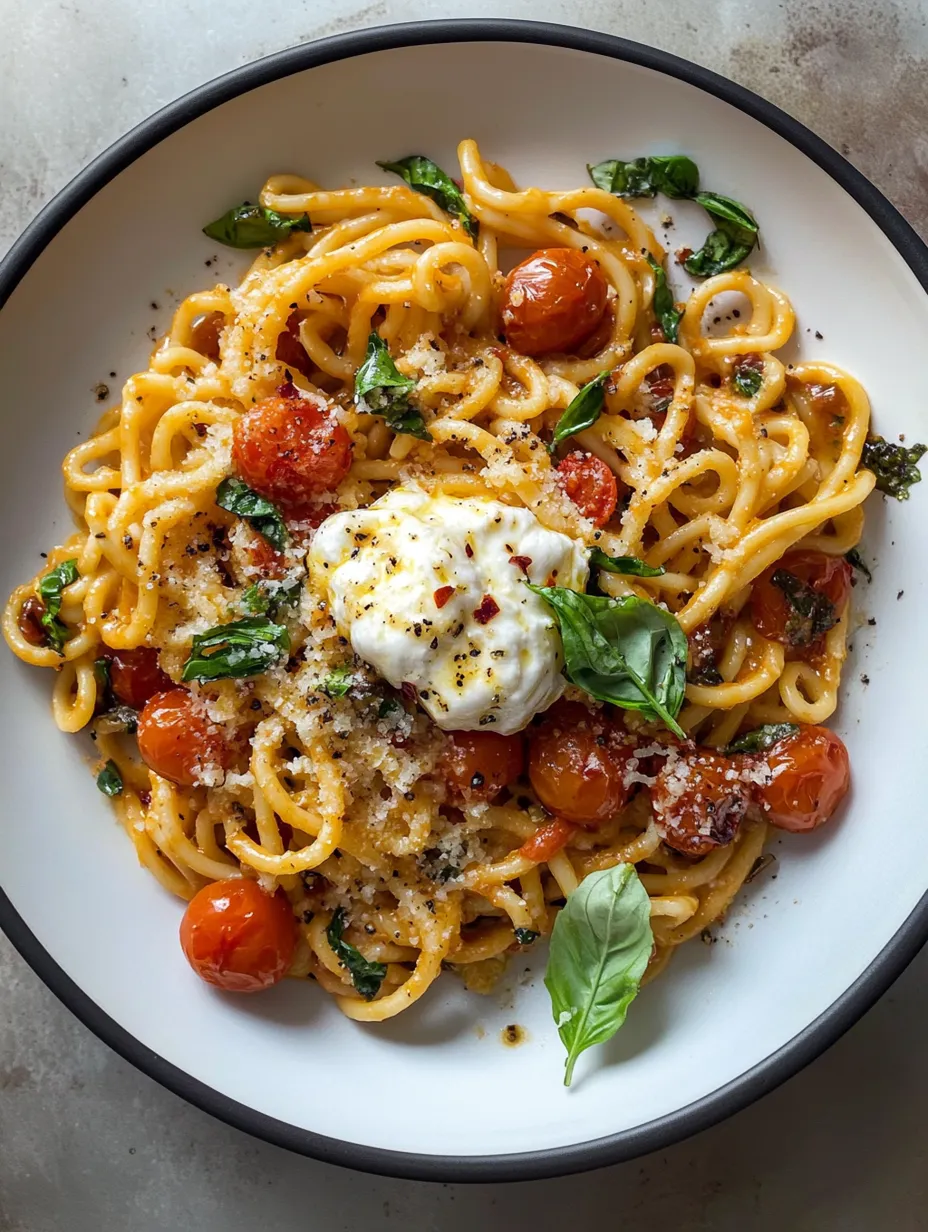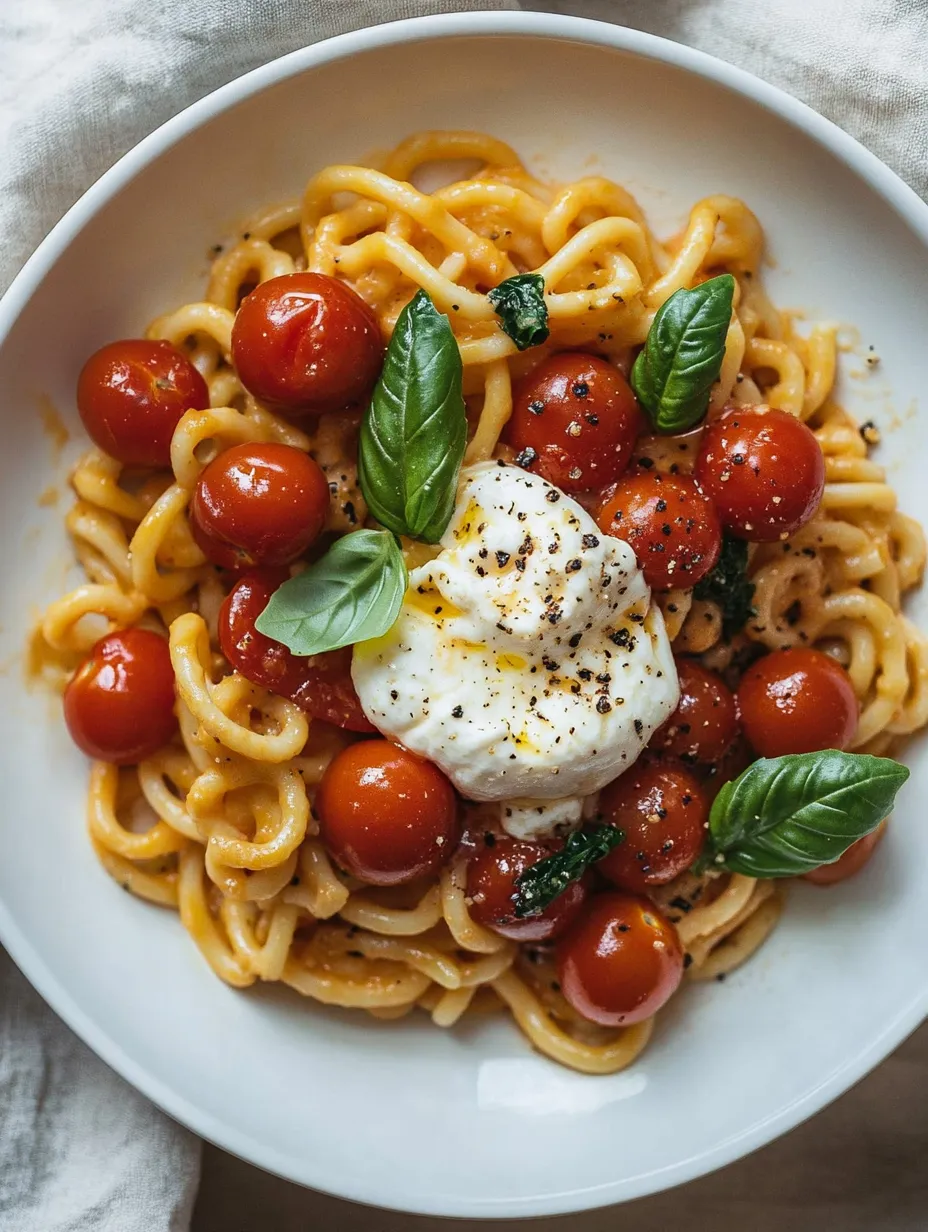 Save
Save
This tangy tomato and burrata pasta came into play during one of those sweltering summer stretches when even thinking about using the oven felt like a betrayal to my window AC. I was eyeing a box of cherry tomatoes that were basically begging to be used, and remembered a simple meal from a little Italian joint downtown. Tossing together slow-cooked cherry tomatoes, plush burrata, and way too much garlic just hits that perfect spot between down-to-earth and kind of impressive. When I served it up to my husband the first time, he actually paused, looked mystified, and asked, 'Why is this so good when it's barely anything?' Ever since, we've whipped it up for drop-in friends or when I just want a meal that feels a little special without all the work.
Last time my friend Sarah randomly swung by right as I was thinking about dinner (she's got a sixth sense for free food), I pulled this together while we chatted over a glass of wine. She was so into it that she started jotting things down mid-bite. Somehow my veggie-phobic teenager finished a huge bowl with zero complaints and actually hovered around, hoping for leftovers. The combo of jammed-up tomatoes and creamy cheese makes everyone happy, I swear.
Dreamy Ingredient Lineup
- Red pepper flakes: Wake everything up with a little heat that won't overpower anything else
- Fresh basil: Toss it in last minute for a jolt of that bright, just-picked taste
- Cherry tomatoes: Get extra sweet and jammy when they fall apart slowly in the pan, totally different from raw
- Burrata: The moment you slice it and the center basically puddles into the noodles, every bite gets dreamy and rich
- Good olive oil: More than just for cooking—it's a huge part of the end flavor, so break out your best stuff
 Save
Save
Easy Steps to Follow
- Adding basil:
- Timing is everything—toss the fresh basil in right after you turn off the burner so the heat brings out the flavor but the leaves stay pretty and green.
- Incorporating burrata:
- I used to just plop the burrata on top, but now I break it up a little and mix some through while the pasta’s hot. That way, you get little creamy bits everywhere, but still some on top for looks.
- Adding pasta to skillet:
- Don’t forget to scoop the pasta directly over—grab some pasta water with it. The sauce will stick so much better than if you strain and rinse everything.
- Selecting pasta:
- Long noodles work best for scooping up all that saucy goodness. I think bucatini is perfect because all the sauce hides in the hollow bits, but plain spaghetti totally works too.
- Bursting tomatoes:
- Let the tomatoes burst and cook down on really low heat—don’t rush! It takes a while, but hands-off is perfect for a sip of wine and pretending you’re busy. The longer, slow burble gives better flavor than quick heat.
- Cooking garlic:
- Give the garlic some love and patience—let it gently sizzle for a minute or two, so it moves past harsh and goes mellow. Rushing it just isn’t the same.
My first go at this was super bare bones: just tomatoes, garlic and some cheese. Not bad, but I figured out along the way that a pinch of dried basil in the sauce plus fresh basil at the end is way better. Red pepper flakes add a quiet heat without taking over. I tried shallots once, but honestly just garlic keeps everything cleaner and brighter. Sometimes less is just more, you know?
Serving Ideas
I usually just throw the skillet on the table and let everyone dig in—less mess, more fun. When I want a full spread, I’ll whip up a salad with arugula, some lemon juice and olive oil to balance things out. Don’t forget crusty bread for catching all the saucy bits. Open a crisp white wine like Pinot Grigio, or go with a light red like Chianti—both are awesome here.
Easy Ingredient Swaps
When the garden is going wild in summer, I’ll toss in double (or triple!) the basil for a super fresh vibe. In the winter, cherry tomatoes are still your best bet, but a splash of balsamic in the pan makes them taste so much bigger. And if you want to make things heartier, a couple handfuls of fresh spinach wilted in right before the pasta does the trick.
Leftover Tips
This is definitely best fresh, when the burrata is soft and creamy. Leftovers hang out okay in the fridge for a day or two, but just know the cheese seizes up a bit—reheat slowly on the stove with a splash of olive oil or water. Don’t bother freezing it, though—the pasta and cheese just go weird.
 Save
Save
I’ve thrown this tomato and burrata pasta together for busy weekdays, surprise guests, even a stay-at-home date night when I needed to impress fast. It’s genuinely satisfying to make something this good with just a few basics. The second my family sees a bag of cherry tomatoes and sniffs garlic, they’re already asking for it. What I started to avoid wasting old tomatoes has turned into our most requested dinner—that’s proof, to me, that sometimes the simple stuff is the best.
Recipe FAQs
- → What's burrata cheese and where can I get it?
- Burrata is a soft Italian cheese made of mozzarella on the outside and cream mixed with stracciatella inside. Check your local gourmet cheese shops, Italian grocery stores, or well-stocked supermarkets.
- → Any substitutes for burrata if I can't find it?
- You can swap it with fresh mozzarella if burrata's unavailable. For a creamier twist, add a splash of heavy cream to your sauce along with mozzarella.
- → How do I know if the tomatoes are done bursting?
- The tomatoes should be very soft, juicy, and some will have split open. If a few are still whole, they should be easily mashable, creating a sauce mixed with the olive oil.
- → Can I prep this dish ahead of time?
- The tomato mixture can be cooked in advance and kept in the refrigerator for 2 to 3 days. Reheat gently when ready to use. Add the burrata only at the last minute so it stays fresh and creamy.
- → What other herbs could I try instead of basil?
- Feel free to experiment with fresh oregano, thyme, or even mint. Tossing in a handful of arugula adds a slightly spicy kick as well.
